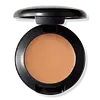What's inside
What's inside
 Key Ingredients
Key Ingredients

 Benefits
Benefits

 Concerns
Concerns

 Ingredients Side-by-side
Ingredients Side-by-side

Octyldodecanol
EmollientDipentaerythrityl Hexahydroxystearate/Hexastearate/Hexarosinate
Skin ConditioningPolyethylene
AbrasiveCera Alba
EmollientTheobroma Cacao Seed Butter
EmollientPersea Gratissima Oil
Skin ConditioningLecithin
EmollientCera Microcristallina
Emulsion StabilisingSilica
AbrasiveMica
Cosmetic ColorantJojoba Esters
EmollientVp/Hexadecene Copolymer
Phenoxyethanol
PreservativeCaprylyl Glycol
EmollientTocopheryl Acetate
AntioxidantTriethoxycaprylylsilane
CI 77891
Cosmetic ColorantCI 77491
Cosmetic ColorantCI 77492
Cosmetic ColorantCI 77499
Cosmetic ColorantCI 77007
Cosmetic ColorantCI 19140
Cosmetic ColorantOctyldodecanol, Dipentaerythrityl Hexahydroxystearate/Hexastearate/Hexarosinate, Polyethylene, Cera Alba, Theobroma Cacao Seed Butter, Persea Gratissima Oil, Lecithin, Cera Microcristallina, Silica, Mica, Jojoba Esters, Vp/Hexadecene Copolymer, Phenoxyethanol, Caprylyl Glycol, Tocopheryl Acetate, Triethoxycaprylylsilane, CI 77891, CI 77491, CI 77492, CI 77499, CI 77007, CI 19140
Alternatives
Ingredients Explained
These ingredients are found in both products.
Ingredients higher up in an ingredient list are typically present in a larger amount.
Octyldodecanol is a fatty alcohol. It is primarily used to enhance the texture of products.
As an emulsifier, Octyldodecanol helps prevent the oils and waters from separating. It also prevents ingredients from creating foam when shaken.
Octyldodecanol is created by reducing fatty acid to an alcohol.
Due to its high molecular weight, it does not get absorbed into the skin.
Learn more about OctyldodecanolSilica, also known as silicon dioxide, is a naturally occurring mineral. It is used as a fine, spherical, and porous powder in cosmetics.
Though it has exfoliant properties, the function of silica varies depending on the product.
The unique structure of silica enhances the spreadability and adds smoothness, making it a great texture enhancer.
It is also used as an active carrier, emulsifier, and mattifier due to its ability to absorb excess oil.
In some products, tiny microneedles called spicules are made from silica or hydrolyzed sponge. When you rub them in, they lightly polish away dead skin layers and enhance the penetration of active ingredients.
Learn more about Silica